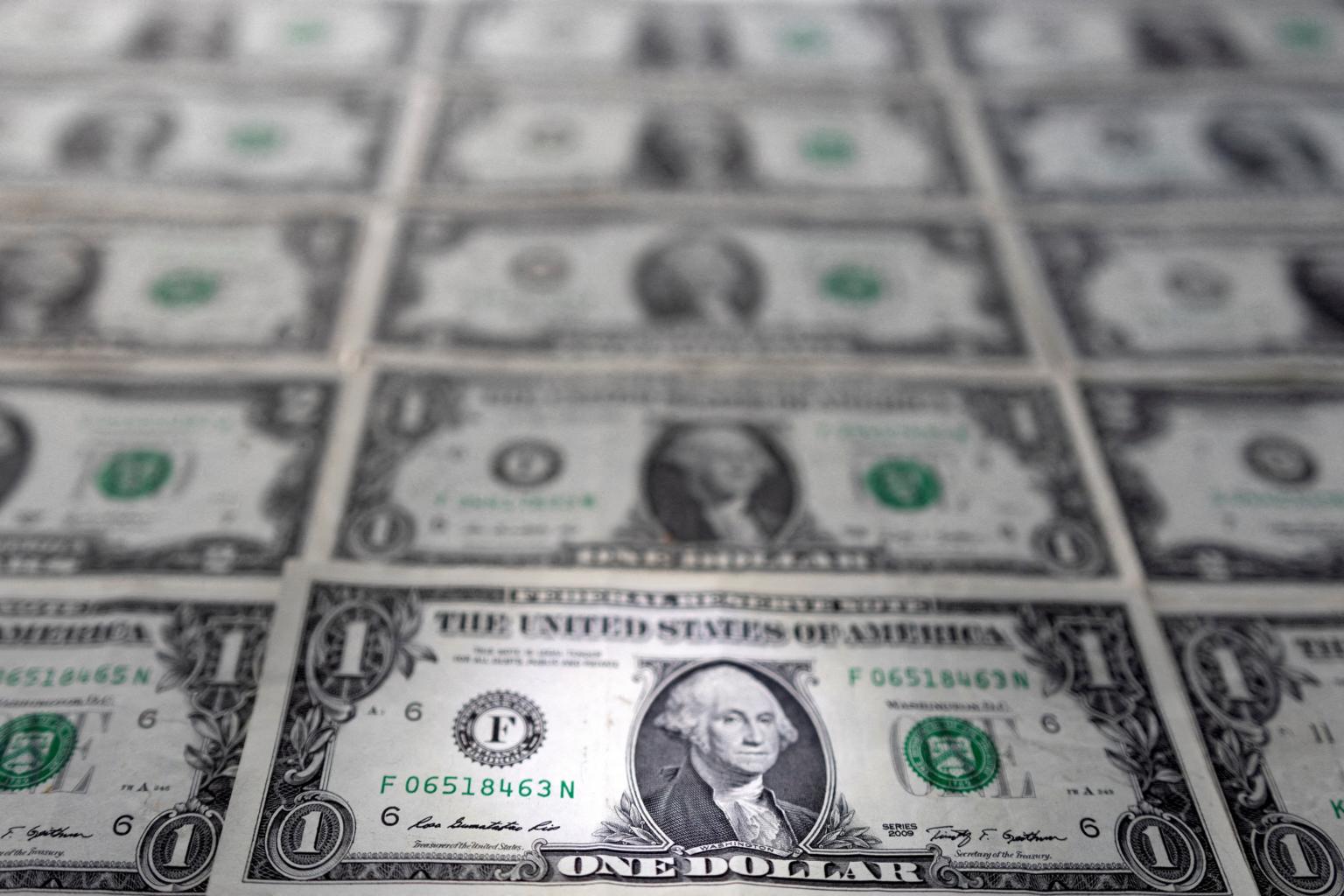US dollar hits 20-year high as broad risk-off sweeps Asia; Singdollar down 0.5%
Sign up now: Get ST's newsletters delivered to your inbox

The US dollar made multi-year highs as Asia's stock markets tumbled.
PHOTO: REUTERS
Follow topic:
SINGAPORE (REUTERS) - The US dollar hit a two-decade high on Monday (May 9) as investors searched for safety and yield due to growing concerns over slowing global economic growth and rising interest rates.
Surging inflation, the war in Ukraine and tighter lockdowns against Covid-19 in Beijing and Shanghai have left investors uncertain on many counts, but they are sure that US interest rates are going up - and the dollar is following.
"Moves in US interest rates are not the only dollar support," said strategists at NatWest Markets in a note. "Downside risks to global growth stemming from Ukraine and China are more pressing for Europe and Asia relative to the United States, creating an air of 2018-style dollar exceptionalism."
The US dollar made multi-year highs on the trade-sensitive Taiwan dollar, South Korean won, Singapore dollar and Malaysian ringgit, as Asia's stock markets tumbled.
It hit its highest in nine months against the Indonesian rupiah.
Against the US dollar, the Singdollar weakened 0.5 per cent on Monday to 1.3922 as at 5.21pm Singapore time. The Singapore currency is down 3.2 per cent against the greenback to date this year, since ending last year at 1.3490.
The greenback made a 22-month high on the growth-sensitive New Zealand dollar and rose 1 per cent to a three-month high against the Australian dollar.
It rose 0.3 per cent to its highest since 2019 on the Swiss franc. The euro was down 0.4 per cent at US$1.0508 and a whisker above a recent trough of US$1.0469.
The yen was close to two-decade lows at 130.96 per dollar, while the British pound wallowed at US$1.2294, barely above Friday's 22-month low.
In China, trade data showed imports flatlined last month and exports rose 3.9 per cent - a little better than expected and enough to hold the Australian dollar at US$0.7006 and off January's low of US$0.6967.
However, the yuan was dragged to a fresh 18-month low of 6.7110 per dollar as lockdowns in Shanghai were tightened. Traders see the fallout from the inevitable drag on China's economy raking across the region.
The yield on benchmark 10-year US government bonds has climbed a staggering 163 basis points this year and taken the dollar with it. The dollar index is up nearly 9 per cent for the year and gained for a fifth week in a row last week. It equalled Friday's near 20-year high of 104.070 during the jittery Asia session.
Speculation that Russian President Vladimir Putin might declare war on Ukraine in order to call up reserves during his speech at "Victory Day" celebrations also hurt market sentiment.
Mr Putin has so far characterised Russia's actions in Ukraine as a "special military operation", not a war, or an invasion.
The US Federal Reserve hiked its benchmark funds rate 50 basis points (bps) last week and strong jobs data has reinforced bets on further big hikes, with inflation figures due on Wednesday in focus as next risk of an upside surprise.
Futures markets are pricing a 75 per cent chance of a 75 bp rate rise at the Fed's next meeting in June and more than 200 bps of tightening by year's end.
"Risks around US CPI feel binary; a moderation from 8.5 per cent would be mildly comforting, but a lift would doubtless revive expectations for 75 bp Fed hikes, and probably give the dollar a boost," said analysts at ANZ Bank.
"The idea that synchronised global tightening might proceed gently now feels like a forgotten dream."
Cryptocurrencies have been battered in the rush from risky assets and Bitcoin was nursing weekend losses and near its lowest levels of the year at US$33,780, while Ether, which fell 4 per cent on Sunday, was at US$2,470.
• With additional information from The Straits Times

